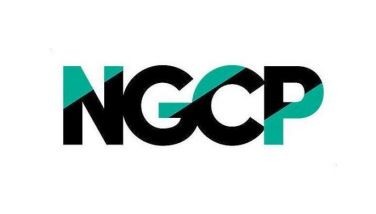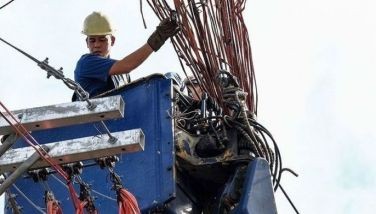The 3 Tings
February 21, 2004 | 12:00am
Golden Arches Development Corp. managing director Kenneth Yang is watching very closely his latest baby – the use of credit cards to buy McDonald’s burgers and fries. Coffee, too.
The pilot, which involves 10 stores, is a response to many "love ko ’to" customer suggestions made in the past year.
Naturally, Jollibee Foods Corp. executive vice-president William Tanmantiong is watching equally closely the credit card experiment.
There’s talk that Planters Development Bank chairman and chief executive officer Jesus Tambunting may be the next chairman of the 65-member Association of Development Financing Institutions in Asia and the Pacific, whose secretariat headed by secretary-general Orlando Peña is based here.
Should that happen sometime this year, Mr. Tambunting will be only the third Filipino chairman in ADFIAP’s 27-year history. The other two are founding chairman Vicente Jayme and his Ateneo classmate (and fellow colleague at the now defunct private development bank, Private Development Corporation of the Philippines) Carlos Torres.
In the mid-1970s, Ting Jayme was one of three nicknamed "Ting" who shaped the country’s economy. The other two were investor banker Sixto Roxas III and former Trade Secretary Vicente Paterno.
President Macapagal-Arroyo finally signed into law last Feb. 10 Republic Act 9242 which hopes to revitalize the local fabric industry by creating a market for it – initially, the 1.4 million government bureaucracy.
The first ones to implement the new law by wearing uniforms from local tropical fabrics will be the employees of the Department of Science and Technology, particularly its subsidiary, the Philippine Textile Research Institute (headed by Carlos Tomboc), which has been at the forefront of testing the properties of abaca with polyester fabric for ordinary menswear and pina with polyester fabric for women.
Oh yes, the PIRI has also come up with the natural dyes that will used in the manufacture of these tropical fabrics. Aside from blue dyes from indigo and gumamela flowers, there are red dyes from the bark of the mahogany and noni trees; and yellow dyes from the bark of the jackfruit tree and the leaves of the cogon grass and so on.
Now here is an interesting comment from a furniture manufacturer preparing for the Feb. 28 to March 2 foreign buyer show at the World Trade Center. Golden Cane Furniture Manufacturing Corp. senior vice-president Eufrocina Pascual is absolutely fearless about competition from China after a trip to see her foreign competitors in action.
Here’s why, China’s so-called cheaper labor cost does not include board and lodging, which is subsidized by the state. If the Philippines were to deduct the cost of food and housing of its furniture workers, why the country’s labor cost would be cheaper or at par with China.
Said another way, productivity (not how much we pay each worker) is a key facto in global competitiveness.
The pilot, which involves 10 stores, is a response to many "love ko ’to" customer suggestions made in the past year.
Naturally, Jollibee Foods Corp. executive vice-president William Tanmantiong is watching equally closely the credit card experiment.
Should that happen sometime this year, Mr. Tambunting will be only the third Filipino chairman in ADFIAP’s 27-year history. The other two are founding chairman Vicente Jayme and his Ateneo classmate (and fellow colleague at the now defunct private development bank, Private Development Corporation of the Philippines) Carlos Torres.
In the mid-1970s, Ting Jayme was one of three nicknamed "Ting" who shaped the country’s economy. The other two were investor banker Sixto Roxas III and former Trade Secretary Vicente Paterno.
The first ones to implement the new law by wearing uniforms from local tropical fabrics will be the employees of the Department of Science and Technology, particularly its subsidiary, the Philippine Textile Research Institute (headed by Carlos Tomboc), which has been at the forefront of testing the properties of abaca with polyester fabric for ordinary menswear and pina with polyester fabric for women.
Oh yes, the PIRI has also come up with the natural dyes that will used in the manufacture of these tropical fabrics. Aside from blue dyes from indigo and gumamela flowers, there are red dyes from the bark of the mahogany and noni trees; and yellow dyes from the bark of the jackfruit tree and the leaves of the cogon grass and so on.
Here’s why, China’s so-called cheaper labor cost does not include board and lodging, which is subsidized by the state. If the Philippines were to deduct the cost of food and housing of its furniture workers, why the country’s labor cost would be cheaper or at par with China.
Said another way, productivity (not how much we pay each worker) is a key facto in global competitiveness.
BrandSpace Articles
<
>
- Latest
- Trending
Trending
Latest
Trending
Latest
Recommended


























